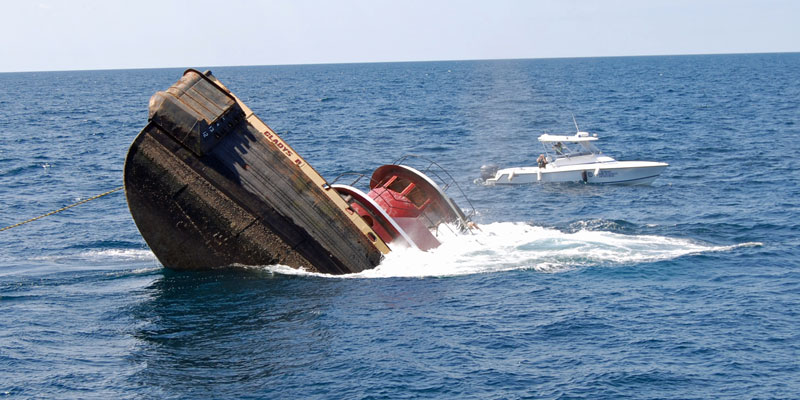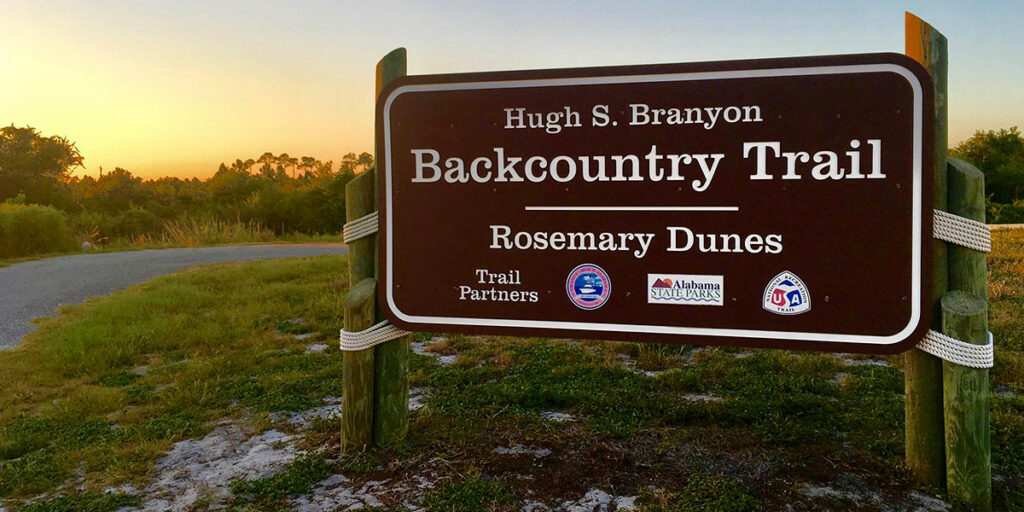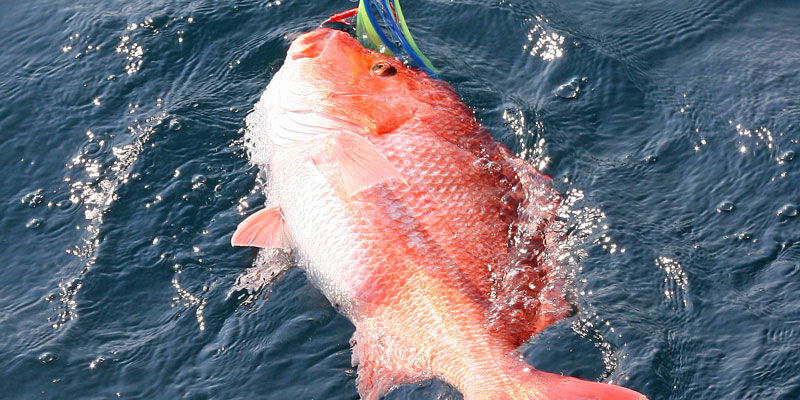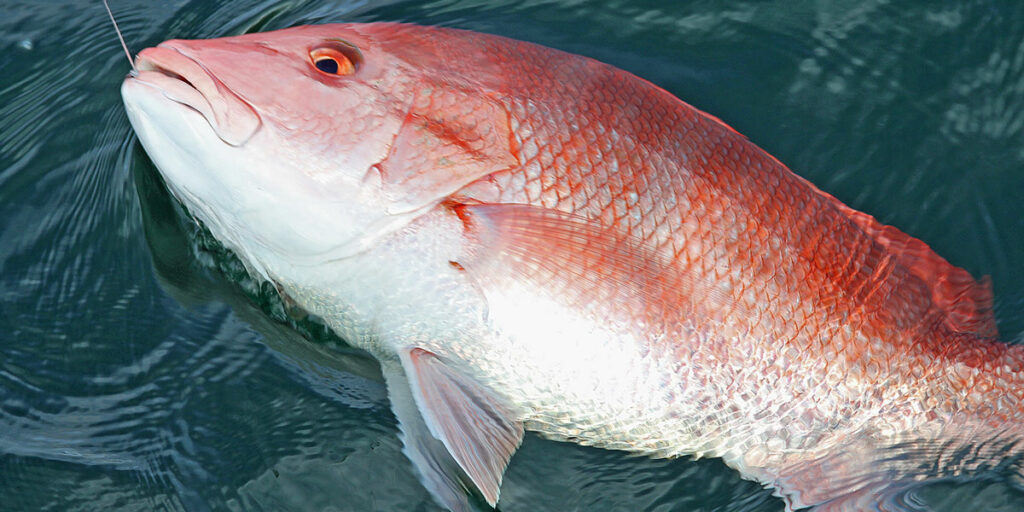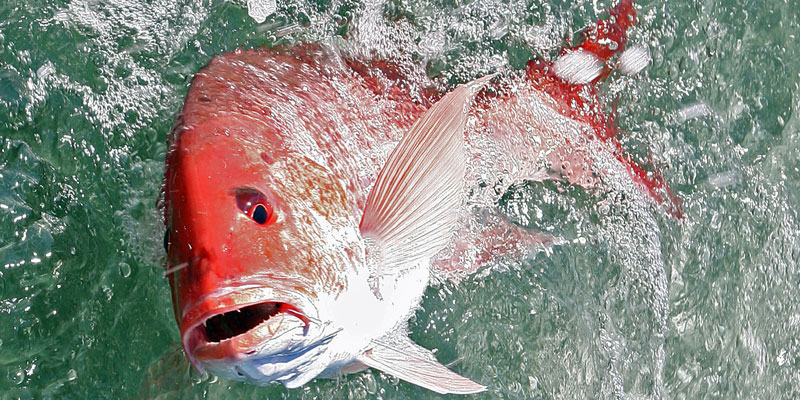Alabama already has the reputation as one of the best places in the nation to fish for saltwater species, especially red snapper.
Now, Alabama is striving to become one of the top destinations for divers to explore numerous wrecks, scuttled vessels and our state’s unparalleled artificial reef zones.
The latest efforts to increase the awareness for dive enthusiasts occurred last week when the Alabama Marine Resources Division (MRD) scuttled a 102-foot tugboat, the Gladys B, in the Tatum-Winn North reef zone approximately 22 nautical miles south of Fort Morgan in 100 feet of water. The superstructure of the vessel is about 62 feet below the surface. The Gladys B was built in 1937 and donated to the MRD Artificial Reef Program by Steiner’s Shipyard from Bayou la Batre. The reef site coordinates are 29 53.635’N and 87 56.071’W.
On the same trip, MRD deployed approximately 200 concrete culvert pipes to enhance the old Tulsa wreck and the Radmore Pipe Number 1 site about 15 miles south of Dauphin Island and to create a new reef site about 25 miles south of Fort Morgan.
The next steps in the plans to provide habitat close to shore that may also attract dive enthusiasts from all over the U.S. will occur offshore and within yards of the Alabama shoreline.
The nearshore project includes circalittoral reefs, sometimes also called snorkeling reefs, that can be reached from the sandy beaches.
Craig Newton, MRD’s Artificial Reefs Program Coordinator, said bids were opened for the circalittoral reefs at three Gulf State Park beach access sites.
At those three sites, 166 reef modules will be deployed to provide habitat for a wide variety of marine life.
“We’re going to create four clusters of reef modules within the three circalittoral reef zones,” Newton said. “We anticipate we will have more activity at the Pavilion reef site, so we’re going to create two independent clusters of reefs at the Pavilion site. We will have one cluster of reefs at the Perdido site and one cluster of reefs at the Romar site.”
Walter Marine of Orange Beach won the contract to deploy the modules in the new zones, and that should happen sometime this year, Newton said.
“We were able to secure some more funds for this project and make it significantly larger than what the original grant proposal covered,” Newton said. “We are excited about that.”
Newton said the reefs, which will be about 475 feet from the shoreline, will be marked by large pilings on the beach. There will be no markers in the water. Signage on the beach will describe the project and include information on what marine life snorkelers might encounter on the reefs.
The offshore project will be the deployment of the New Venture, a 250-foot surveying vessel, which will be ready for final inspection by May 2018. Newton said the original plans included towing the vessel to Mobile to wait on a weather window to deploy the ship. Those plans have changed. Now the vessel will be towed to Venice, La. When the weather allows, the New Venture will be towed straight to the deployment site about 20 nautical miles south of Orange Beach in about 120 feet of water. The top of the superstructure will be 55 to 60 feet below the surface.
“We look to be about a month away from completing the deployment,” Newton said. “We had some engineering models on how the ship was going to sink. We had to add a couple of bulkheads within the interior of the ship to direct water to keep the ship stable as it’s going down. We want to do all we can to make sure the ship lands upright. We don’t want it to roll over.”
Creation of 15 acres of juvenile reef fish habitat is also scheduled. Limestone aggregate rocks from 8 pounds to 50 pounds in size will be deployed. Each reef site will be about an acre in size.
“The goal is to create habitat for juvenile reef fish,” Newton said. “We feel like there is a significant potential for production from this project. Hopefully, we can grow a few more reef fish. The juvenile habitat sites will go inside one of the 9-mile reef zones that were approved earlier this year. The timeline for this construction is about the same as the circalittoral reefs.
“We know we’re going to get some subsidence (sinking into the seafloor) with these rocks. But if we can get a decent amount of production from these reefs to offset the subsidence, then we feel like the project will be worth it.”
Marine Resources is also in the middle of an ongoing project to deploy 120 Super Reefs in the offshore reef zones. Two deployment trips have been made this year.
With all this reef activity progressing, the dive operators in Mobile and Baldwin counties hope to capitalize on this activity to increase awareness of the opportunities off the Alabama coast.
Several dive operators and tourism officials met recently at Orange Beach to work on a strategy to do just that.
In 2013, the dive business got a significant boost when The LuLu was deployed off the Alabama coast with much fanfare. Less than 24 hours later, divers swarmed the 271-foot vessel resting in about 110 feet of water.
“When we do something special, like this New Venture, the awareness and excitement starts all over again,” said Bud Howard of Down Under Dive Shop in Gulf Shores. “Just like when we sunk The LuLu. It was like ‘Wow.’
“With New Venture, we’ll get more advanced divers, technical divers and wreck divers. The interest in the New Venture has been burning my web page up.”
Down Under, which has a multi-passenger dive boat, has already made plans to dive the New Venture each Wednesday and Saturday, when weather allows, as soon as it is reefed.
Gary Emerson of Gary’s Gulf Divers in Orange Beach can carry six divers, the same capacity as Chas Broughton’s Underwater Works in Fairhope. Gulf Coast Divers in Mobile sells and rents equipment and refers divers to boat operators.
Emerson said an information campaign needs to be started to apprise boaters of Alabama’s dive-flag law, which requires a floating red-striped flag to be deployed in the area of the diving and snorkeling activity. Boaters are required to stay at least 100 feet away from the area marked by the dive flag.
The dive-shop owners expressed interest in adding more reefs in water no deeper than 60 feet to allow dive shops to offer more opportunities for new divers to gain certification. Certification dives are limited to depths no greater than 60 feet.
“We need locations with different depths to appeal to a wide range of divers,” Howard said. “We have people from all over the Midwest who come to Alabama because this is the closest place to them for diving opportunities. These people spend a lot of money when they’re here. I do think the snorkeling reefs are really going to help.”
Vince Lucido of the Alabama Gulf Coast Reef and Restoration Foundation echoed that last sentiment.
“When the snorkeling reefs get opened, that will be awesome,” Lucido said. “We’ll have access right off the beach.”
David Rainer is an award-winning writer who has covered Alabama’s great outdoors for 25 years. The former outdoors editor at the Mobile Press-Register, he writes for Outdoor Alabama, the website of the Alabama Department of Conservation and Natural Resources.




